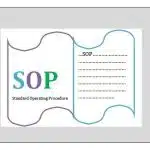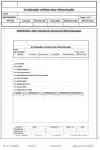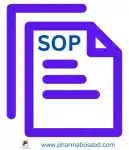Learn how to write a standard procedure for Product Development Planning in pharmaceutical industry.
1. PURPOSE
To outlines the steps and guidelines for planning product development, ensuring that all necessary tasks are completed in a systematic and timely manner to bring new products from concept to market.
2. SCOPE
This SOP applies to all departments and personnel involved in the product development process, including Research & Development (R&D), Marketing, Sales, Quality Assurance (QA), and Production.
3. RESPONSIBILITIES
3.1 Product Development Team: Responsible for the overall execution of the product development plan.
3.2 Project Manager: Oversees the project timeline, resource allocation, and coordination between teams.
3.4 R&D Team: Conducts research, develops prototypes, and tests product concepts.
3.5 Marketing Team: Provides market research and customer insights, defines product positioning, and develops marketing strategies.
3.6 QA Team: Ensures product quality and compliance with regulatory standards.
3.7 Production Team: Plans for manufacturing, scaling, and delivery of the product.
5. ACCOUNTABILITY
Head of the Concerned Department
6. REFERENCES/ ASSOCIATED DOCUMENTS
GMP guidelines for every stages and related SOP.
7. PROCEDURE
7.1 Initiation Phase
7.1.1 Collect ideas from various sources, including customer feedback, market trends, and internal brainstorming sessions.
7.1.2 Document and evaluate ideas based on feasibility, market potential, and alignment with company goals.
7.1.3 Develop initial product concepts.
7.1.4 Create sketches, models, or basic prototypes to visualize the product.
7.1.5 Conduct market research to assess demand.
7.1.6 Perform technical feasibility analysis.
7.1.7 Estimate costs and potential (Return on Investment) ROI.
7.1.8Present the concept to senior management for approval to proceed to the planning phase.
7.2 Planning Phase
7.2.1Develop a detailed project plan, including timelines, milestones, and resource allocation.
7.2.2 Assign roles and responsibilities to team members.
7.2.3 Estimate costs for each phase of development.
7.2.4 Secure funding and budget approval.
7.2.5Identify potential risks (technical, financial, market-related) and develop mitigation strategies.
7.2.6 Create a risk management plan.
7.2.7Identify applicable regulations and standards.
7.2.8 Develop a compliance strategy and timeline.
7.2.9 Establish a communication plan to ensure regular updates to stakeholders.
7.2.10 Schedule regular meetings and progress reviews.
7.3 Execution Phase
7.3.1 Finalize product design based on initial concepts and feedback.
7.3.2 Develop detailed specifications and engineering drawings.
7.3.3 Create prototypes and conduct testing to validate design and functionality.
7.3.4 Collect feedback and make necessary adjustments.
7.3.5 Finalize the product design.
7.3.6 Prepare documentation for manufacturing and regulatory submission.
7.4 Launch Phase
7.4.1 Plan for full-scale production, including sourcing materials, setting up manufacturing processes, and quality control measures.
7.4.2 Develop and execute a marketing launch plan, including promotional activities, product placement, and sales strategies.
7.4.3 Plan and execute the distribution of the product to various sales channels.
7.4.4 Monitor product performance in the market.
7.4.5 Collect customer feedback and analyze sales data.
7.4.6 Make adjustments to the product or marketing strategy as needed.
7.5 Closure Phase
7.5.1 Conduct a final review of the project, including successes, challenges, and lessons learned.
7.5.2 Document findings and share them with relevant teams for future projects.
7.5.3 Archive all project documentation, including design files, test results, and final reports.
8. ABBREVIATIONS
8.1 SOP: Standard Operating Procedure
8.2 QA: Quality Assurance
8.3 QC: Quality Control
8.4 GMP: Good Manufacturing Practice
8.5 ROI: Return on Investment
8.6 R&D: Research & Development
9. ANNEXURES
Annexure-1: Project Plan Template
Annexure-2: Risk Management Plan Template
Annexure-3: Compliance Checklist
Frequently Asked Questions (FAQs)
What is Product Development Planning?
Product development planning is the process of defining, strategizing, and organizing the steps and resources needed to create a new product or improve an existing one. This includes understanding market needs, setting goals, determining key features, allocating resources, establishing timelines, and setting a budget. Effective product development planning ensures that a product is developed efficiently, meets customer expectations, and aligns with the company’s strategic objectives.

Abdus Sobhan Salim is professional experienced pharmacist in pharmaceuticals, author and founder of pharmabossbd.com, the first Bangladeshi pharmaceutical blogger since 2019.



